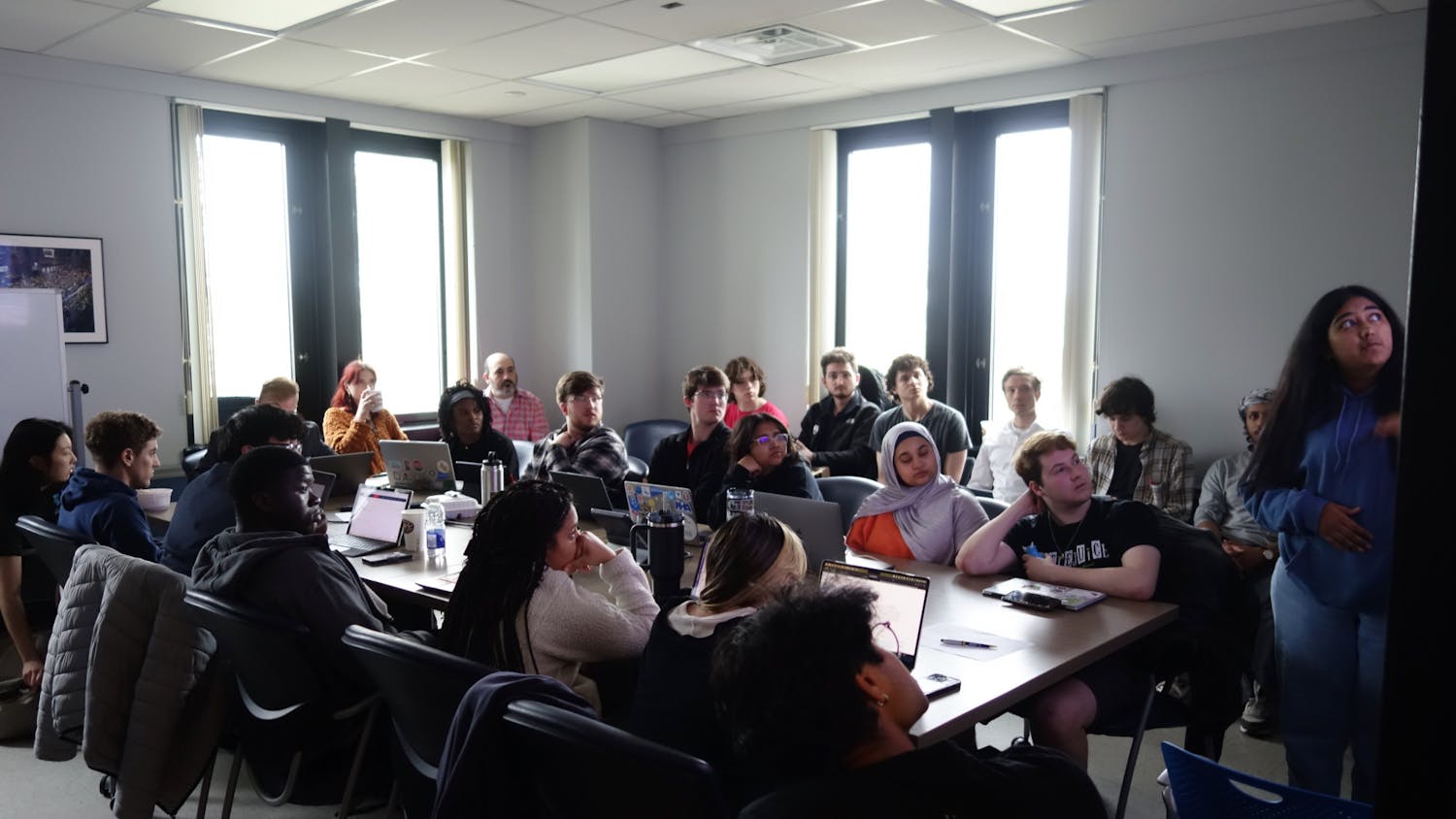State legislatures across the nation are increasingly linking state aid for public institutions of higher education to performance, an idea popular among politicians despite complaints from college officials.
According to Research Associate Henrik Minassians, who works for the Rockefeller Institute, a research institute of public policy for SUNY, states generally use three methods for determining aid to colleges and universities: performance budgeting, performance funding and performance reporting.
Performance budgeting examines overall academic performance and bases funding on a number of different academic indicators, such as grade performance and graduate job placement.
Performance funding picks unique indicators - graduation rates and enrollment figures as in New York, for example - and ties a certain amount of money to each.
Performance reporting, however, is becoming the most popular method of assessment in higher education. "It's become more and more popular among politicians because it costs less money," said Minassians. Research offices collect overall, not specific, information from college departments, like whether a school is research-based or what kinds of degrees are offered.
"Legislators are more likely to go with performance reporting because it requires some form of accountability from the colleges and universities, but doesn't necessarily cut from the institution's funding," said Minassians.
New York primarily uses the method of performance funding, said Minassians. The state uses a formula to fund both enrollment growth and sponsored research, a determining factor of a university's academic performance. UB also receives tuition scholarship money from the state based on the quality of its graduate programs.
"The idea is popular [politically] because universities are very complicated places and the relationship between funding and outcome is murky," stated Provost Elizabeth Capaldi in an e-mail. "By tying funding to outcome, the state hopes to encourage and reward the outcome they want."
Many in the state government believe that binding state aid to an institution's performance will justify accountability and further increase an institution's responsibility for receiving state funds, according to state Assemblyman Sam Hoyt (D-Buffalo, Grand Island).
"[Politicians] believe that those receiving the funding will be more accountable," said Hoyt. "It's a results-based funding and that's becoming very commonplace in government in general."
Minassians said research performed by his organization has shown that some college officials disagree, fearing that by linking performance to state aid, politicians will have more control over which curriculums receive funding.
"The issue here is academic freedom," said Minassians. "Politicians may dictate what to do and could tell academics what to say."
Although many states take a public institution's performance into account when determining funding, these financing systems have almost no stipulations for how public colleges distribute funds internally, according to a Feb. 22 article in The Chronicle of Higher Education. As a result, some individual schools and departments within an institution may not be held responsible for poor performance.
New York combats this problem by offering a flexible financial formula that rewards a university's efficiency by allowing it to keep savings and fund increases in research quality and productivity, according to Capaldi.
By providing monies to account for enrollment growth, New York supplies a constant level of funding necessary to counter any wide fluctuations in support. Too great a focus on academic performance has caused difficulties in other locations. For example, the state university system in South Carolina was forced to completely reevaluate and amend their formula for determining aid because the formula proved inefficient in calculating the amount of funding necessary.
"Whenever the number of students increase, there is increased workload, and [New York's] formula gives state money to help hire the faculty needed for the students so that the quality of education is not impaired by enrollment growth," stated Capaldi.
Capaldi said the state's formula guarantees a stable base of funding necessary to ensure the continuity of academic programs.
"SUNY has made great strides in doing all of this and I think it is probably the best system in the nation in terms of actually accomplishing these goals," stated Capaldi.
Binding state aid to performance is catching fire not only at universities, but in other areas as well. Many states, New York included, also link state aid for social services and correctional facilities to performance.
"Various programs [within the Department of Social Services] across the state that used to not have the same type of standards are now expected to prove that the money is being put to good use," said Hoyt. "In other words, what are the outcomes?"
But performance funding requires institutions to meet deadlines and certain prescribed goals. If an institution does not, funding could be cut, said Minassians.
He said performance funding is generally used when the economy is doing well because politicians have more money to spend, and criticized the practice because the implementing of any measurement of performance takes longer than a politician's term in office, which is generally two years.
Total funding for UB is more complicated because the university receives only about 30 percent of its total funding from the state. Additional money for the university comes from sponsored research, private donations, auxiliary activities and clinical fees.
"Each of these resources has its own rules and regulations and accounting systems," stated Capaldi. "They also all have their own expectations and we must report to all our constituencies. That's what makes these jobs fun."
By allowing universities to pursue research grants and rewarding them for successful allocations, New York's formula provides the kind of flexibility that state lawmakers want to see utilized when determining funding for a large research-based professional school like UB or a smaller state school like Buffalo State College.
"As long as there is some degree of flexibility so that a school like the University at Buffalo is not put into some sort of formula that punishes them because of their unique status as a research institution, it's a better product," said Hoyt.




